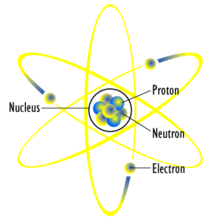
The word atom means uncuttable, or indivisible, something that cannot be divided further. The concept of an atom as an indivisible component of matter was first proposed by early Indian and Greek philosophers. In the 18th and 19th centuries, chemists provided a physical basis for this idea by showing that certain substances could not be further broken down by chemical methods, and they applied the ancient philosophical name of atom to the chemical entity. During the late 19th and early 20th centuries, physicists discovered subatomic components and structure inside the atom, thereby demonstrating that the chemical "atom" was divisible and that the name might not be appropriate. However, it was retained. This has led to some debate about whether the ancient philosophers, who intended to refer to fundamental individual objects with their concept of "atoms," were referring to modern chemical atoms, or something more like indivisible subatomic particles such as leptons or quarks, or even some more fundamental particle that has yet to be discovered.
Chemical atoms, which in science now carry the simple name of "atom," are minuscule objects with diameters of a few tenths of a nanometer and tiny masses proportional to the volume implied by these dimensions. Atoms can only be observed individually using special instruments such as the scanning tunneling microscope. Over 99.94% of an atom's mass is concentrated in the nucleus, with protons and neutrons having roughly equal mass. Each element has at least one isotope with an unstable nucleus that can undergo radioactive decay. This can result in a transmutation that changes the number of protons or neutrons in a nucleus. Electrons that are bound to atoms possess a set of stable energy levels, or orbitals, and can undergo transitions between them by absorbing or emitting photons that match the energy differences between the levels. The electrons determine the chemical properties of an element, and strongly influence an atom's magnetic properties. The principles of quantum mechanics have been successfully used to model the observed properties of the atom.

No comments:
Post a Comment
Do leave your feedback on the comment box below.